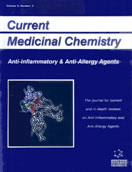Abstract
Allergic immune responses result from complex cascades of events mediated by multiple effector cells and their signaling molecules. The multiplicity of mediators involved in allergic reactions also provides numerous potential targets for intervention. In recent years, a number of approaches have been undertaken to inhibit the synthesis and function of allergen-specific IgE antibodies, induce blocking anti-allergen IgG antibodies, prevent the differentiation of Th2 cells, or eliminate the cells or mediators causing allergic symptoms. Directed molecular evolution using DNA shuffling and appropriate screening technologies provides a means to generate improved vaccines and therapeutics with the potential for short-term and long-term therapeutic effects. DNA shuffling enables the generation of large libraries of chimeric genes from which improved variants can be selected based on functional properties. Structural information obtained from shuffled molecules will also help in the understanding of receptor-ligand interactions and may assist in the design of small molecules that specifically interact with given targets. Here we review strategies to generate novel allergy vaccines and anti-allergic therapeutics, with particular emphasis on approaches utilizing directed molecular evolution.
Keywords: specific immunotherapy of allergy, allergy vaccines, dna shuffling, anti-Ige antibodies, ctla-4 binding protein (ctla-4bp)
 2
2

